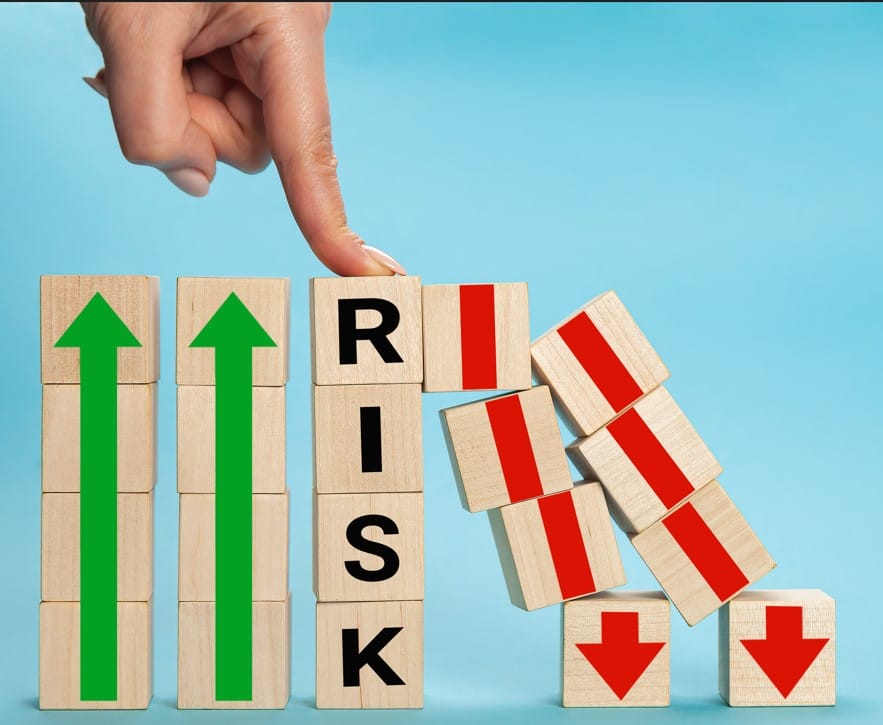1. Understanding Risk-Reward in Trading
Introduction to Risk-Reward Ratio
The risk-reward ratio is a critical concept in trading that refers to the potential gain compared to the potential loss in a trade. It’s essential to understand this concept to make informed decisions that can help to maximize returns while minimizing risks.
Identifying Suitable Ratios
Traders often aim for a minimum ratio of 1:2 or higher, meaning that the potential gain should be at least twice the potential loss. Identifying the suitable ratio for your trading strategy requires understanding your risk tolerance, market conditions, and investment goals.
Risk Management Techniques
Proper risk management is key to implementing a successful risk-reward strategy. It involves setting stop-loss orders, diversifying the portfolio, and assessing market trends to determine the ideal entry and exit points.
2. Leveraging Trades: A Double-Edged Sword
The Concept of Leverage
Leverage involves borrowing capital to increase the potential return on an investment. While it can amplify gains, it also increases the potential losses, making it a powerful but risky tool.
Using Leverage Wisely
To use leverage wisely, traders must assess the underlying risks and implement strict risk management protocols. This may include setting tighter stop-loss orders and regularly monitoring the leveraged positions.
Regulations and Margin Requirements
Understanding the regulations and margin requirements of the platform or jurisdiction in which you are trading is vital. Failure to adhere to these requirements can lead to devastating financial losses.
3. Tools and Techniques for Optimal Returns
Technical and Fundamental Analysis
A combination of technical and fundamental analysis can help traders identify the best risk-reward opportunities. This involves analyzing price trends, market indicators, economic factors, and company performance.
Algorithmic and Automated Trading
Algorithmic and automated trading systems can help in implementing complex risk-reward strategies with precision. By setting specific parameters and automating trade execution, traders can take advantage of fleeting opportunities.
Risk Management Software
Specialized risk management software can assist traders in tracking, assessing, and managing their risk-reward profiles. Such tools help in setting appropriate stop-losses, monitoring market trends, and generating real-time reports to make informed decisions.
4. Building a Robust Trading Strategy
Aligning with Investment Goals
A robust trading strategy must align with the trader’s long-term investment goals, risk tolerance, and trading style. It is the foundation for successful risk-reward management.
Continuous Learning and Adaptation
The financial markets are constantly changing. Successful traders continue to learn, adapt, and evolve their strategies to keep pace with market trends, economic developments, and technological advancements.
Psychological Factors
Trading requires mental discipline and emotional control. Understanding and managing the psychological factors that can influence trading decisions are crucial to executing a successful risk-reward strategy.
5. Monitoring and Adjusting Risk-Reward in Real-Time
The financial markets are constantly evolving, driven by a multitude of factors such as economic indicators, geopolitical events, and corporate announcements. To master risk-reward dynamics, traders must continuously monitor their positions and adjust their risk-reward parameters in real-time. Real-time monitoring involves keeping a close eye on market developments, news updates, and price movements that can impact the trades.
One critical aspect of real-time monitoring is recognizing potential triggers that may lead to significant market movements. For instance, an unexpected change in interest rates by a central bank, a geopolitical crisis, or a corporate earnings report can cause abrupt shifts in asset prices. By staying informed about such events, traders can make timely decisions to protect their profits or limit potential losses.
In addition to staying vigilant about external events, traders should also be mindful of the technical aspects of their positions. Technical indicators, chart patterns, and price levels can offer valuable insights into the health of a trade. Setting stop-loss orders and take-profit levels at strategic points can help traders automate the process of adjusting risk-reward ratios based on market movements
6. Taking Advantage of Risk-Reward Asymmetry
Risk-reward asymmetry presents situations where the potential reward significantly outweighs the risk taken. This concept can be a game-changer for traders seeking to optimize their returns. Identifying and capitalizing on risk-reward asymmetry requires a keen eye for potential opportunities and a willingness to act when the odds are in your favor.
One example of risk-reward asymmetry is when a stock’s price is severely undervalued based on fundamental analysis, presenting a significant upside potential with limited downside risk. In such cases, traders may consider taking a contrarian position, expecting the market to recognize the stock’s true value and drive the price higher.
Another way to take advantage of risk-reward asymmetry is through options strategies. Buying out-of-the-money call options can offer substantial reward potential if the underlying asset’s price experiences a sharp increase, while the premium paid for the options represents the maximum potential loss.
9. Keeping a Positive Risk-Reward Ratio
Maintaining a positive risk-reward ratio is a fundamental principle for successful trading. A positive risk-reward ratio means that the potential profit from a trade outweighs the potential loss. For example, if a trader sets a stop-loss at 2% and aims for a profit target of 6%, the risk-reward ratio is 1:3. This ratio ensures that the trader’s winning trades more than compensate for their losing trades.
Positive risk-reward ratios are vital for long-term profitability, even with a moderate success rate. Traders can have a lower win rate and still be profitable as long as their winning trades provide larger gains than their losing trades’ losses.
One effective way to maintain a positive risk-reward ratio is through the use of trailing stop-loss orders. As a trade moves in the trader’s favor, the trailing stop-loss automatically adjusts upward, locking in profits while allowing for potential further gains. This strategy lets winners run while cutting losses short.
10. Scaling In and Scaling Out
Scaling in and scaling out are risk management techniques that involve entering or exiting trades in multiple increments. Instead of going all-in on a trade at once, traders scale in by gradually building a position over time. Similarly, scaling out involves progressively reducing a position as the trade moves in the trader’s favor.
Scaling in can be advantageous in situations where the trader expects the market to provide better entry opportunities. By starting with a smaller position, traders can test the waters before committing more significant capital. This approach can be particularly useful in volatile markets, where prices may experience short-term fluctuations.
Conversely, scaling out allows traders to lock in profits while still keeping a portion of the position open to capture potential further gains. This method ensures that the trader realizes some return on the trade even if the market reverses direction after hitting the initial profit target.
11. Applying Game Theory in Risk-Reward
Game theory, a branch of mathematics and economics, is the study of strategic decision-making in competitive situations. In the context of trading and investments, understanding game theory principles can provide valuable insights into risk-reward dynamics.
One fundamental concept in game theory is the Nash equilibrium, which represents a situation in which no player has an incentive to change their strategy given the strategies of other players. In trading, Nash equilibria can be analogous to a balanced market, where buyers and sellers reach an agreement on prices based on their respective risk-reward assessments.
By understanding game theory principles, traders can gain a deeper insight into how other market participants might behave and how their actions may influence risk-reward outcomes. For instance, if a trader identifies a situation where many market participants have taken highly leveraged positions, it may indicate a potential risk of abrupt market movements if those positions need to be unwound.
12. Learning from Successful Investors
Studying the strategies of successful investors and traders can provide invaluable lessons in risk-reward management. Learning from their experiences, successes, and mistakes can help traders gain new perspectives and refine their approach to risk-reward dynamics.
One of the primary ways to learn from successful investors is through biographies, interviews, and books written by or about them. These sources often detail the investors’ thought processes, strategies, and approaches to managing risk. Books authored by successful investors can offer valuable insights into their decision-making, risk tolerance, and methods of achieving consistent returns.
Additionally, attending investment conferences and webinars where successful investors share their insights can provide valuable learning opportunities. These events often feature discussions on investment strategies, risk management techniques, and market insights from seasoned professionals.
Mentorship is another powerful way to learn from successful investors. Having a mentor who has navigated the markets successfully can provide personalized guidance, real-world experiences, and constructive feedback on risk-reward management
Conclusion
By mastering these concepts, traders can more effectively manage their risk and potentially improve their investment returns. They can also make more informed decisions about which trades to make and how to use leverage in a responsible and profitable way.
Remember, trading and investing always involve risk, including the risk of loss. It’s important to do your own research and consider seeking advice from a qualified professional before making any investment decisions.
Don’t trade all the time, trade forex only at the confirmed trade setups.
Get more confirmed trade setups here: forexgdp.com/buy/










